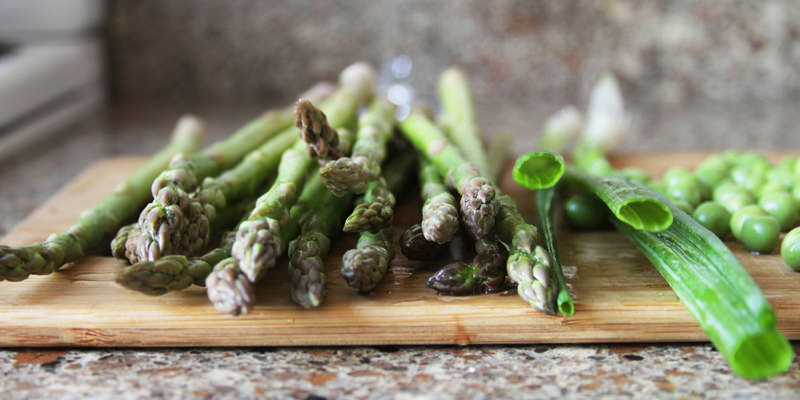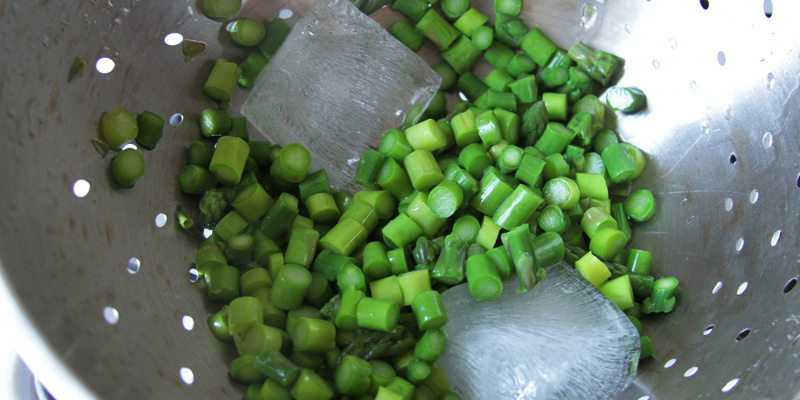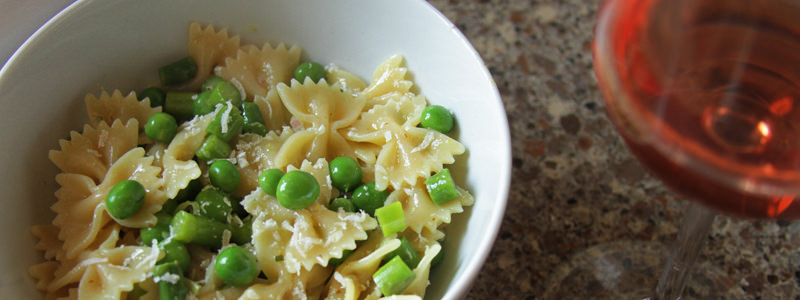Last week, I was cleaning out my fridge and found an almost empty bottle of rosé leftover from a recent Game of Thrones viewing party. On those rare occasions when a bottle of wine simply can’t be finished, I’ll usually hoard it in my fridge expecting to drink it the next night. But sometimes life gets in the way, and a week later I’m left with a not-so-fresh glass of rosé that I must consider (with regret) washing down the drain.
Thankfully, wine makes for a versatile cooking ingredient. And, while there are more complex methods to transform your table wine to vinegar, I find that a week-old open bottle of wine is perfect for a crisp, yet mild vinaigrette – dry, crisp white or rosé with notes of citrus work especially well. With these wines, there’s just enough acidity to cut through the oil, and the hint of sweetness lends itself to a well rounded dressing.
My general rule of ratios for any vinaigrette is 1 part vinegar (or leftover wine) to 2 parts oil. With this base I’ll then add dijon mustard, agave or honey and a squeeze of lemon, all to taste.
A mild wine vinaigrette works well in the context of a pasta salad and naturally pairs perfectly with a cool, crisp glass of dry white or rosé. With picnic season right around the corner, try your hand at this Spring Pea and Asparagus Pasta Salad dressed in a Rosé Wine & Tarragon Vinaigrette and grab a delicious bottle of Rosé to match. An easy warm weather dish that will pleasantly please.

Spring Pea and Asparagus Pasta Salad with Rosé Wine & Tarragon Vinaigrette
For the pasta salad:
1 pound bowtie pasta
2 cups of fresh peas
½ a bunch of asparagus, cut into ½ inch pieces
2 stalks of scallion, thinly sliced
Grated Parmesan Reggiano
For the dressing:
¼ cup of leftover rosé
½ cup of good quality olive oil
1 tablespoon of dijon mustard
1 tablespoon of shallots, minced
1 – 2 tablespoons of fresh tarragon, finely chopped
1 teaspoon of agave or honey
1 lemon
Wash and prep the peas and asparagus. For the asparagus, I like to cut off the bottom two inches and discard – the vegetable is tougher here and can often taste woody. Chop the rest into ½ inch pieces. Thinly slice the scallion.
Bring a small pot of water to a boil. Blanch the peas and asparagus. For the peas, you’ll place them in the boiling water for about 2 minutes and then immediately transfer to a drainer, run under cold water and then let them set with ice water. For the asparagus, place them in boiling water for 3 minutes and then do the same. Blanching is important to help retain the vegetables crisp texture as well as their bright green color. Set the veggies aside in a bowl of ice water, stirring occasionally.

Mix together the ingredients for the vinaigrette. Add more dijon, honey and lemon to fit your taste.
Meanwhile, bring another pot of water to boil and cook pasta as advised. As someone who is incredibly picky about pasta texture, I usually pay 100% attention to this process and taste test liberally. Once the pasta is to your liking, quickly drain and run under cold water. Shake off the excess water.

Transfer the cooked pasta to a large bowl. Mix in the peas, asparagus, scallion and dressing. Top off with a pinch of salt, pepper and grated Parmesan.
Clara Kim makes food, drinks wine and writes about it on her food blog, Make A Story

